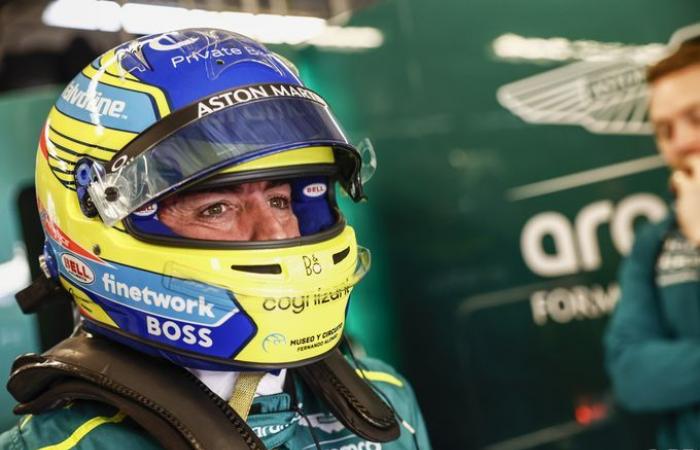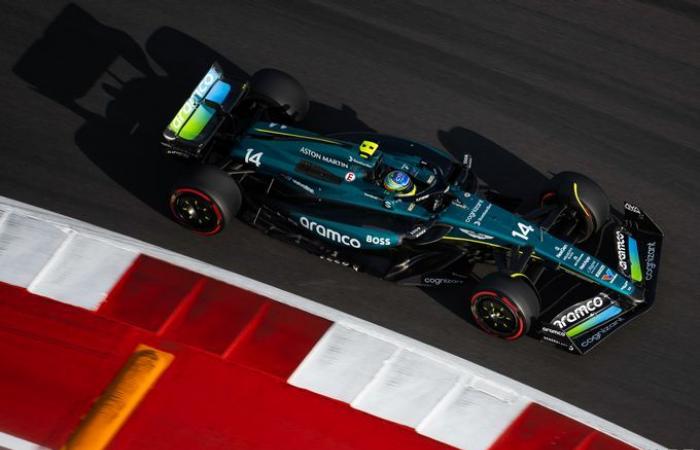Fernando Alonso will celebrate his 400th engagement in Formula 1 this weekend, a record in history since he is the first to reach this milestone. The Aston Martin F1 driver looks back on this long adventure and considers the rest of his career.
“It feels good to be successful. Obviously championships and race wins are what matters most to us as drivers” declared the double world champion and double winner of the 24 Hours of Le Mans.
“But at the same time it shows my love for the sport and the discipline I have shown to reach a very high level for more than 20 years. During this time I have achieved what every racing driver dreams of do: become world champion.”
“And I've had some incredible experiences competing against some of the best drivers in the world on the biggest circuits. I don't think I'll add another 400 to my total, but I hope I still have at least 40 or 50 races to go in the next two years.”
Asked about the secrets of his longevity, the Spaniard explains that modern F1 is less physically difficult: “I think modern F1 is easier on the body than previous ones, which allows you to race longer.”
“Of course it's still a huge physical challenge, but the technology of F1 has changed and the cars are a little more pleasant for the drivers. The comfort of the seats, the safety equipment, the helmets, everything has evolved in common sense.”
“On Sunday, the pace of the cars is also more pleasant for us than in the past. Nowadays, the cars start the race with full fuel, and we have to save tires and energy throughout the race , which means that we are not at the maximum performance of the cars for long periods of time.”
“The only time of the weekend that is really physically demanding is normally the qualifying session, which is very short, so I have no problem keeping up with the youngsters in terms of fitness.”
“I still have a lot to do in this sport”
As for his motivation, he explains that it is above all his passion for racing: “I still love F1 and motor racing. I love competing and I try to give my best every day. I'm always looking for that extra percent to keep pushing myself. improve.”
“I still have a lot to do in this sport and the plan we have here at Aston Martin is exciting. We have a new era of regulations coming in 2026 which brings new opportunities with partners like Aramco and Honda, and people like Adrian Newey joining us.”
The two-time world champion explains what he has learned during his years at the highest level: “You learn not to get too excited about different results over the years and quickly move on, regardless of the result of the previous race; there is always another challenge ahead.”
“This sport is so fast that you don't have time to look back. It's also essential to have a good team around you, because F1 is a team sport as much as an individual sport, and without this, over the years, I would not have been able to achieve the success I have experienced.”
This weekend, Formula 1 goes to Mexico, a circuit on which the atmosphere is always joyful, and which has a passage within a stadium: “I always love racing in Mexico. The fans are very passionate here and they create an incredible atmosphere.”
“Many of them usually wear Aston Martin Aramco Racing Green. It's a historic circuit and the Foro Sol stadium section at the end of the lap is one of the most iconic places to drive a F1.”
Altitude makes the body and the F1 “work”
The particularity of the Autodromo Hermanos Rodriguez is that it is located at more than 2000 meters above sea level. Alonso details the effects of this elevation on the cars, but also on the bodies of the drivers.
“As pilots, we try to train in special facilities that can replicate the high altitude before the race, so that our body is as prepared as possible. The high altitude means there is less oxygen available and our body has to work harder.”
“On the car, the thinner air significantly reduces drag, allowing us to achieve higher speeds on the straights, but we use wings of a similar size to those we would use in Monaco, because the support is also much weaker.”
“The engine works harder because there is less oxygen available to draw in, and less air also passes through the radiators, intakes and ducts, leading to reduced cooling. This means that things run hotter or require much larger ducts to be able to be cooled.”







